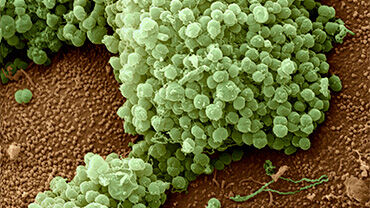European Gonococcal Antimicrobial Surveillance Programme (Euro-GASP)
Expanding Euro-GASP
In 2011, 21 out of 30 EU/EEA countries participated in Euro-GASP. The reasons for non-participation are primarily the lack of available cultures to refer to Euro-GASP (due to the use of nucleic acid amplification tests), the differences in diagnostic procedures in STI clinics, and the lack of resources for performing culture. Participation from central and eastern EU/EEA countries should be improved, as very limited information is available on the AMR profile in these countries.
In some countries, antimicrobial drugs seem to be easily available without prescription and the use of suboptimal medication as a second-line treatment seems to be common. These factors increase the risk of emergence of multidrug resistance Neisseria gonorrhoeae (MDR NG). Expanding Euro-GASP to more countries is therefore important to further control emergence and spread of MDR NG strains in Europe.
Actions
- Inclusion of two additional Member States in Euro-GASP 2012
- Ensuring that all Euro-GASP laboratories participate in the EQA programme
- Ensuring further dissemination of Euro-GASP results though the members of the European STI network
Indicators
- Number of countries participating in Euro-GASP
- Number of isolates reported through Euro-GASP
- Number of laboratories participating in the EQA programme
National microbial resistance
Euro-GASP provides important data at the European level but is dependent on national gonococcal surveillance systems or on specimen collection specifically designed for Euro-GASP participation. The increased use of NAAT (Nucleic acid amplification test) as the principal diagnostic method in many countries has made it difficult for many countries to obtain samples for culture and susceptibility testing.
Actions at the national level
- Promoting the establishment of a national platform for expert consultation across different disciplines involved in gonorrhoea control
- Developing and implementing a national sentinel gonococcal antimicrobial susceptibility programme (GASP) which provides information on a limited number of gonococcal isolates against a panel of antimicrobials linked to the epidemiological characteristics of the patient
- Ensuring specimen collection for GASP in a small network of laboratories (minimum requirement)
- Supporting the implementation at the national level of transport media for gonococci which allow dual usage of NAAT and subsequent culture and antimicrobial susceptibility testing
Indicators
- National (sentinel) GASP in place
- Proportion of all STI clinics (sentinel sites) that have access to culture and antimicrobial susceptibility testing
- Proportion of all (reported) gonorrhoea cases tested with culture and with antimicrobial susceptibility results available
Training
ECDC continues to offer STI laboratory training modules for STI laboratory staff in EU/EEA Member States in order to enhance the capacity to perform culture and antimicrobial susceptibility services. Training on sampling and treatment failure should be provided for healthcare providers at national level.
Actions
- Providing ECDC laboratory training modules to a number of Member States
- Countries offering training for laboratories and/or clinicians at the national level
Indicators
- Number of countries participating (or have participated) in the ECDC laboratory training modules
- Number of countries offering national training modules (laboratory and/or clinical)
Improving data completeness and timeliness
Reporting of epidemiological variables, including specimen site, sex, age, sexual orientation, previous infections and concurrent STI diagnosed is important to understand the spread of infection. The completeness of this data in Euro-GASP 2009 and 2010 (annual reports) is low and the number of Member States reporting these variables needs to be increased.
Timely reporting of AMR and epidemiological data is essential in order to quickly identify emerging trends. Laboratories and epidemiologists participating in Euro-GASP will be encouraged to upload their national AMR and epidemiological data in a timely manner. ECDC will provide support and training for uploading data to The European Surveillance System (TESSy).
Actions
- Improving the completeness of epidemiological characteristics at national level
- Assessing the representativeness of Euro-GASP in 2012-2013
- Ensuring that AMR and epidemiological data are reported in a timely manner to TESSy
- Assessing the time required for Euro-GASP reports and recommending improvements
Indicators
- Proportion of countries reporting epidemiological characteristics in Euro-GASP
Indicators for improving representativeness developed following the first assessment - Completeness of Euro-GASP data with respect to key epidemiological characteristics
- Time interval between Euro-GASP sample collection period and publication of Euro-GASP reports (interim and final)






